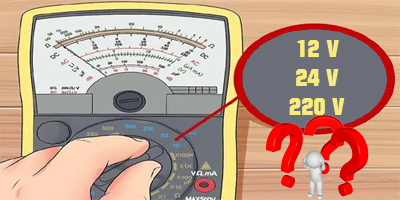Comparison of the advantages and disadvantages of led strips in 12V, 24V and 220V

First of all, let's answer the big question that we are regularly asked: Do 24V strips light up more than 12V strips?
The answer is No!
For the same strip available in 12 or 24V, the lighting is of the same light intensity.
However, there are a few differences that we will explain to you.
12V led strips
A voltage of 12V is generally applied for low or medium power LED strips such as mood lighting or main lighting in a medium-sized room.
- The 12V very low voltage led strips can be used in swimming pools, showers, basins and jacuzzis.
- The strips can be cut on shorter sections (example: 5 cm in 12V, 10 cm in 24V).
- Requires larger cable sections to power several strips, as the current intensity is doubled compared to 24V.
- Divides the capacity of controllers and amplifiers by 2. Example: a controller has a power of 144W at 12V and 288W at 24V.
24V led strips
A voltage of 24V is used for power led strips, generally above 15W per meter.
It will also be preferred for lighting projects requiring long lengths of led strips.
- Requires smaller cable sections to power several strips, because the current intensity is divided by 2 compared to 12V.
- Doubles the capacity of controllers and amplifiers. Example: a controller has a power of 144W at 12V and 288W at 24V.
- Although 24V is considered very low voltage, it is preferable to limit it to 12V for use in swimming pools, showers, ponds and jacuzzis.
- The strips must be cut on longer sections (example: 5 cm in 12V, 10 cm in 24V).
220V led strips
The use of 220V with LED strips poses a major problem of reliability and durability.
They are widely discouraged by reliable manufacturers, for this same reason. In addition, the latter only offer a very limited warranty (6 to 12 months) on this type of product.
Our company has therefore chosen not to market this type of led strip because we favor reliability and customer satisfaction.
- Requires standard cable sections (1.5 mm²), even on long lengths of tape.
- A single strip can reach greater lengths, unlike low voltage strips limited to 5 meters. Note that this problem has been solved with the long-length 24V strips, which can reach 30 meters in a single section.
- Easy to install, no 220/12V or 24V transformer needed.
- Prohibited use in swimming pools, showers, basins and jacuzzis.
- Risk of electric shock when working on the tapes.
- Dangerous in case of loss of water resistance over the long term or improper installation.
- Limited life and frequent breakdowns.
- The strips must be cut on longer sections (example: 5 cm in 12V, 10 cm in 24V, and 100 cm in 220V).
